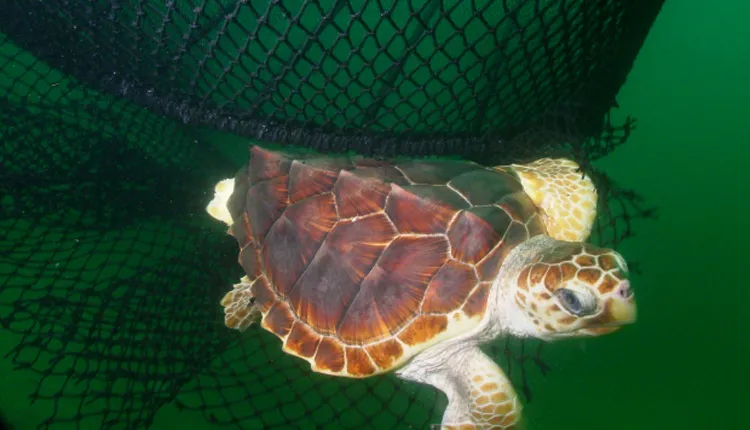Loggerhead Escapes from Fishing Net

One of the biggest threats to sea turtles, such as the loggerhead turtle (Caretta caretta) pictured here, is being accidentally caught and killed in fishing nets. Trapped in a net, the turtles are dragged through the water with no access to the surface to breathe, causing them to drown.
To address this problem, NOAA Fisheries worked with the shrimp trawling industry to install escape hatches into their nets called Turtle Excluder Devices, or TEDs. A crosshatch of bars in the middle of the net create a grid large enough for small shrimp to pass through, but not turtles and other large animals. When they hit the grid, they can then swim out through a hole in the net and escape.
Before TEDs were installed, an estimated 70 to 80 percent of turtle strandings on beaches were caused by shrimp nets. But since they were installed by U.S. shrimpers in the Gulf of Mexico in the late 1980s, strandings caused by shrimp nets are estimated to be down by at least 44 percent.

